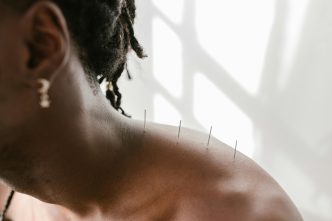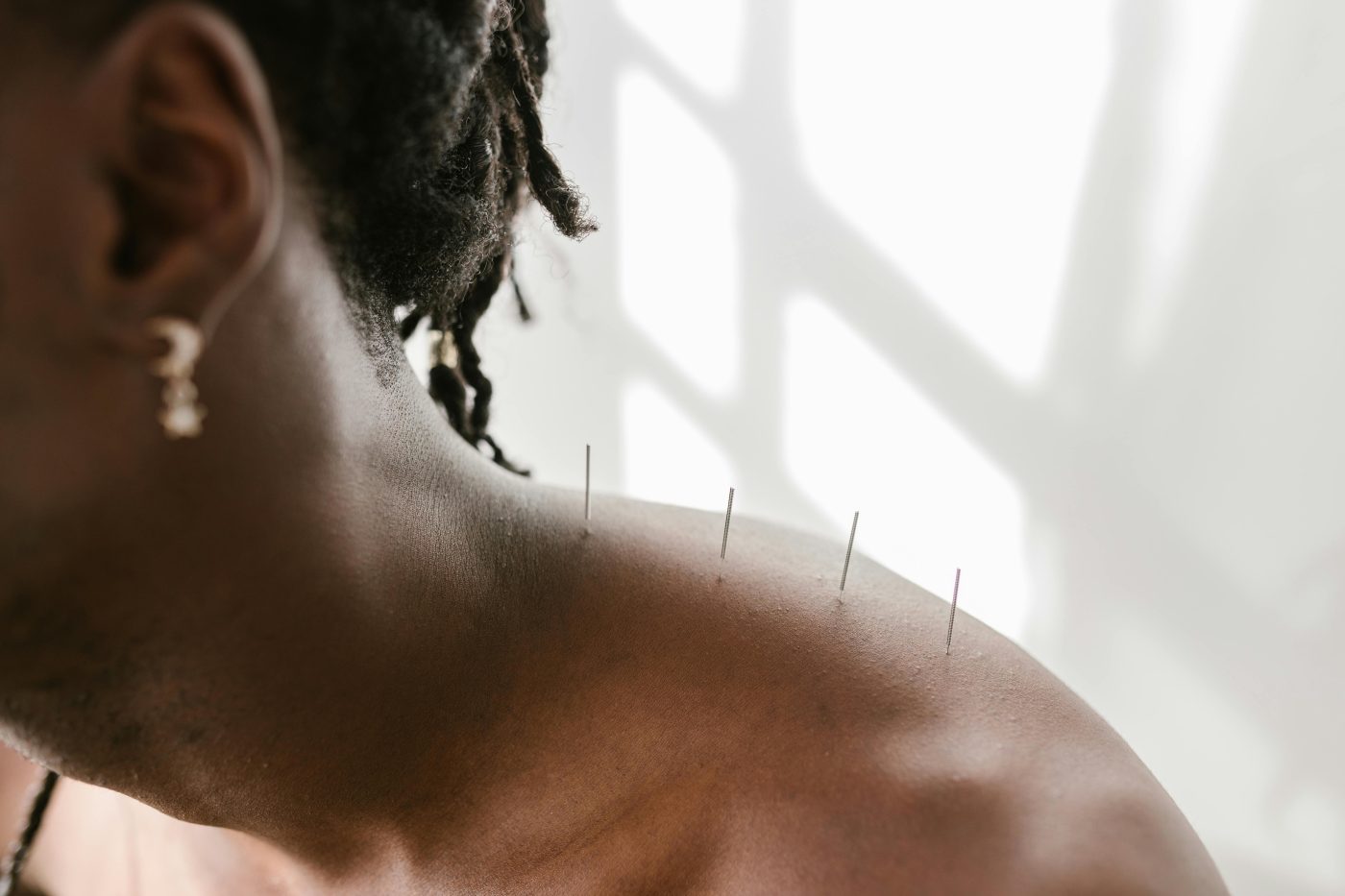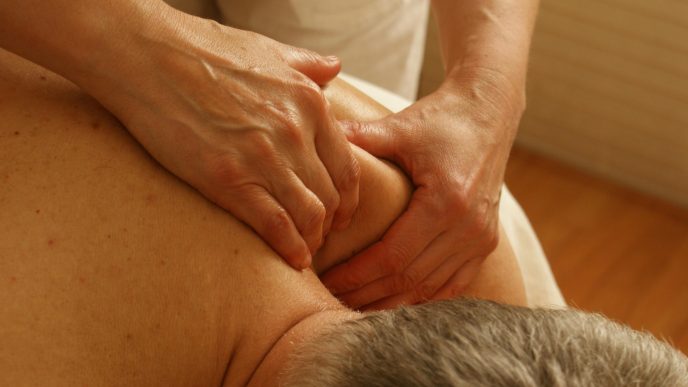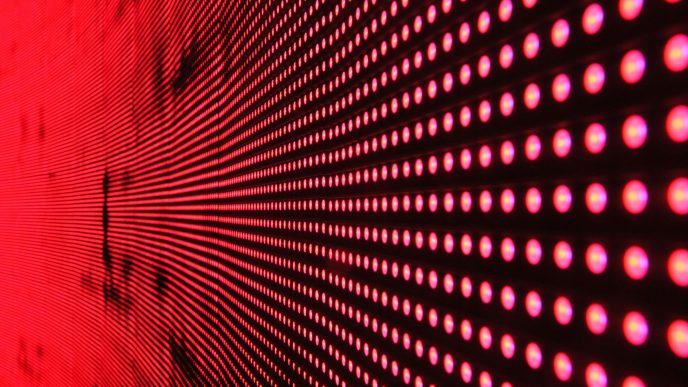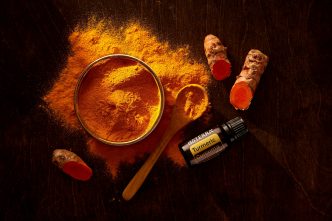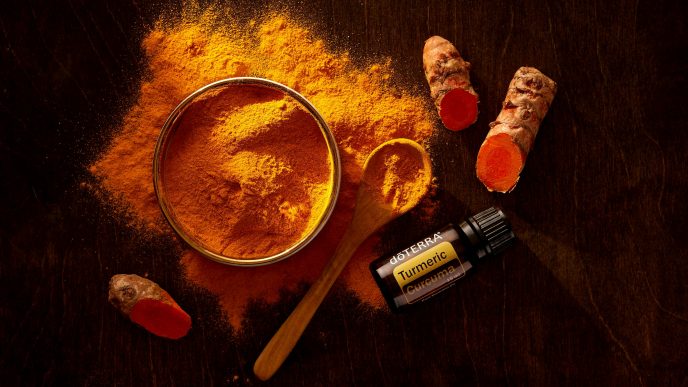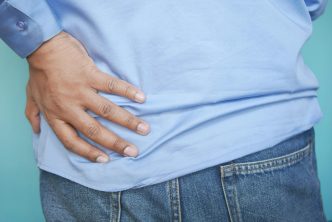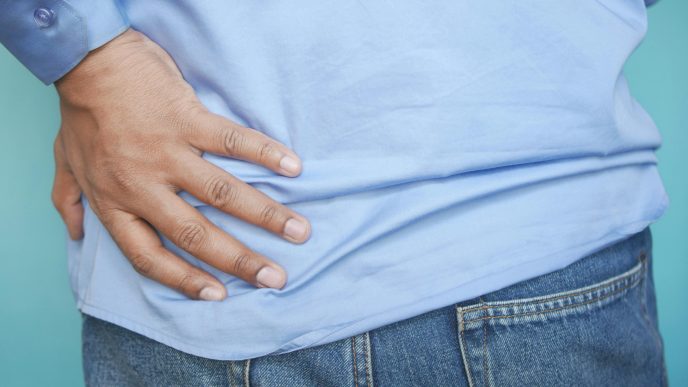Acupuncture may help alleviate symptoms — especially shoulder/hip pain, stiffness, and steroid-related insomnia— for some people with polymyalgia rheumatica (PMR). It does not replace steroids or disease-modifying therapy, and there’s no direct PMR-specific trial evidence yet. Think acupuncture it as a supportive add-on therapy that you can trial in a measured way.
The evidence at a glance
- PMR-specific data: We don’t have randomized PMR trials of acupuncture. Observational PMR cohort work notes patients do try non-drug add-ons, but high-quality data are limited.
- Pain conditions that resemble PMR’s sore spots: Large individual-patient meta-analyses show true acupuncture outperforms sham for chronic pain (back/neck, knee OA, headache, shoulder pain) with small-to-moderate effect sizes that persist over time. That suggests plausible symptom relief potential for PMR’s girdle pain.
- Shoulder pain focus: Trials in chronic shoulder pain (common in PMR) report benefit of real vs. sham acupuncture and of electro-acupuncture protocols.
- Sleep/insomnia (relevant on steroids): Systematic reviews suggest acupuncture improves subjective sleep quality vs. sham; objective sleep changes are less certain.
- Guidelines perspective: The EULAR/ACR PMR recommendations center on glucocorticoids and selected steroid-sparing drugs; they neither endorse nor evaluate acupuncture as disease-directed therapy—another reminder to treat it as complementary, not core.
What acupuncture can do (realistic expectations)
- Ease shoulder/hip girdle pain and stiffness
If you’re still “tight” despite a proper steroid taper, adding acupuncture may nudge pain and function in the right direction, especially around the shoulders, based on broader chronic-pain and shoulder-pain trials. Expect modest gains rather than a cure. - Help steroid-related insomnia
When prednisone timing and sleep hygiene aren’t enough, a short course of acupuncture may improve perceived sleep quality. (Great for some; neutral for others.) - Support your overall plan
Many patients report feeling calmer and more limber—which can make it easier to stay active, follow a gentle exercise plan, and taper without chasing aches with extra NSAIDs.
What acupuncture can’t do
- It doesn’t treat the underlying PMR inflammation or prevent relapses on its own. Your medical plan (steroids ± steroid-sparing therapy) still does the heavy lifting.
- It is not a treatment for possible giant cell arteritis (GCA). If you develop new headache, jaw pain when chewing, scalp tenderness, or visual symptoms, that’s an emergency — you need prompt medical assessment and higher-dose steroids, not acupuncture.
How to trial acupuncture (a simple, safe framework)
- Set a focused goal. Choose one primary outcome to track for 2–4 weeks (e.g., minutes of morning stiffness, shoulder pain 0–10, or nights you sleep ≥6 hours).
- Session plan. Start with 6–8 weekly sessions, then reassess; if it helps, taper to every 2–4 weeks for maintenance. (Electro-acupuncture is reasonable to consider for stubborn shoulder symptoms; your practitioner can advise.)
- Keep medications stable. Don’t change steroid doses on your own; let your clinician guide tapering so you can tell what’s helping what.
Safety, side effects, and special situations
- Overall safety: Serious complications are rare when performed by trained professionals (serious adverse events roughly 0.04–0.08 per 10,000 treatments), but do occur — classically pneumothorax, nerve/organ injury, or infection. Choose licensed practitioners who use single-use sterile needles.
- Blood thinners: Accumulating data suggest acupuncture can be performed safely in patients on warfarin or DOACs with appropriate technique (avoid risky sites/depths, apply pressure longer). Always tell your practitioner about anticoagulants and any easy bruising.
- When to skip or delay: Fever, active skin infection over needle sites, unexplained swelling, or severe uncontrolled cardiopulmonary disease. If you are markedly immunosuppressed or have a prosthetic joint at risk, discuss with your clinician first.
- During flares: Very tender areas may be uncomfortable; consider gentler techniques or defer until the flare settles.
Finding a practitioner (and what to ask)
- Credentials: Look for a licensed acupuncturist (e.g., L.Ac., R.Ac.) or a clinician with accredited training.
- Approach: Ask how they’d target shoulder/hip girdle symptoms common in PMR, and whether they use electro-acupuncture when appropriate.
- Safety and hygiene: Confirm single-use needles, infection control, and experience treating people on steroids/anticoagulants.
- Cost/budget: Typical cash prices vary by region; set a trial budget for 6–8 sessions and evaluate your tracked outcomes before continuing.
How this fits with your overall PMR plan
- Medical core stays first: Steroids with a careful taper ± methotrexate or other steroid-sparing therapy per guidelines. Use acupuncture to smooth the road—not as a substitute for evidence-based treatment.
- Bundle smart: Many patients get the most from acupuncture when it’s paired with heat before movement, gentle mobility, and sleep timing for steroids.
Frequently asked questions
Will acupuncture lower my CRP or ESR?
Not reliably. It’s aimed at symptom relief, not lab normalization. Your clinician will still use labs and symptoms to steer the taper.
How soon should I feel anything?
Some feel looser after the first few sessions; others need 4–6 sessions to judge. Keep the trial time-boxed and outcome-tracked.
Is electro-acupuncture better?
For shoulder pain, several trials used electro-acupuncture with benefit; it’s a reasonable option if basic protocols underwhelm.
Bottom line
Acupuncture can be a useful add-on for PMR symptoms — not a cure, not a steroid replacement.
If you try it, do it deliberately: pick a goal, run a 6–8-session trial, track outcomes, and keep your prescribing clinician in the loop. That way you’ll know, objectively, if it earns a place in your routine.
Medical disclaimer: Educational content only; not a substitute for personal medical advice. Seek urgent care for any symptoms suggestive of GCA (new headache, jaw pain with chewing, scalp tenderness, or vision changes).
